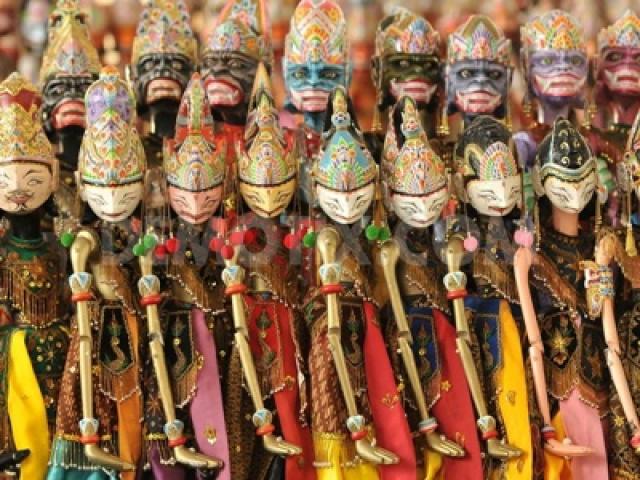
Wooden Puppet comes from drawing characters form, and the stories can be seen clearly in the mind drawing for the source has been lost. At first, the puppets are part of pagan religion worshiping 'Hyang', which is done during harvest time or planted in the Ruwatan ceremony, Tingkeban, or Merti to succeed in the farming harvest and village protected from evil.
In the year 898-910 AD, wayang was a puppet prototype yet still devoted to the worship of Sang Hyang as written in inscriptions Belitung Sigaligi Mawayang for Hyang, Macarita Bhima kumara translation: hold puppet to Bima tells Kumara in Mataram Hindu time from India. Written an ancient Javanese king in the Darmawangsa in 996 - 1042 AD. The Mahabharata is Sanskrit assembled into 9 Parwa ancient Javanese languages, then Arjuna Wiwaha was successfully prepared by Mpu Kanwa at King Jayabaya ruled, Kediri kingdom.
Mpu Sedah began compiling stories Bharatayuda then completed by Mpu Panuluh. Mpu Panuluh then constructs the story Gatutkacasraya Hariwangsa. According to Centhini's story, written by Jayabaya ruling palm leaves are arranged like blinds and put together with rope. In the Majapahit Kingdom period, the Puppet was drawn on paper and was equipped with ornate clothing from the early 10th century.
The 12th century AD was the 'secularization' puppet stage one to begin the formulation of various mythos, that glorified the king as direct descendants of the Gods. The 15th century was the start of phase two of the globalization Javanese cultural influence of Islam, which began to seep unnoticed and stood at the beginning of the 16th century Demak kingdom. There were many rules, that conflicted with puppet Islamic teachings then broken puppets were ordered to change some rules, immediate action by the trustees in Beber Prabangkara puppet work quickly cooked up, and again it was made from buffalo's skin.
